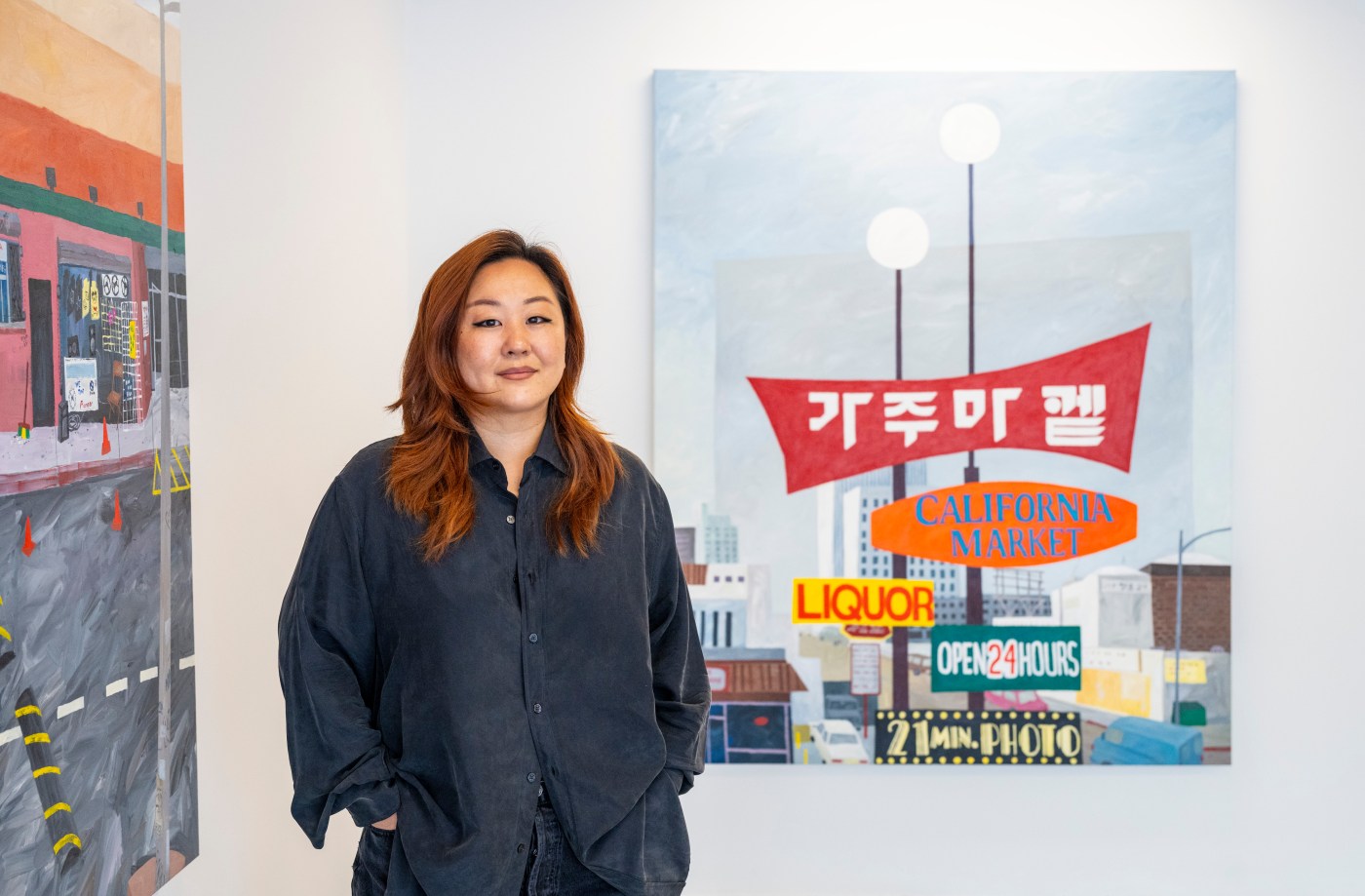As federal immigration raids sweep across Southern California, Wendy Park’s new solo exhibition in Tustin is painfully timely for the Korean American artist.
Park’s show, “Of Our Own,” now on view at the Various Small Fires gallery in Tustin, explores the textures of Korean American immigrant life through colorful but quiet still-life paintings pulling images from her own childhood. But Park says the works are more than nostalgic. They’re pointed meditations on survival at a time when immigrant communities once again find themselves under siege.
“I was finishing the show while the raids were happening,” Park, 39, said in an interview. “It just kind of doubled down on the reason I chose to share these stories.”
Her parents, immigrants from South Korea, raised Park in Cerritos after first arriving in Koreatown. Like many Korean American children of the 1980s and ’90s, Park spent weekends at swap meets, served as an interpreter before she could even spell the word and carried the burden of bicultural navigation early on. For many immigrants, swap meets offered low-cost entry points into entrepreneurship, particularly for newcomers facing language barriers, limited capital or racial discrimination that kept them out of more traditional, high-cost business opportunities.
“A swap meet is an open place where anyone can come and start a living, they can sell or provide whatever they have. It’s also a place where people who don’t have that much money can come and get things at a bargain,” Park said.
Her memories — of swap meet stalls, junk drawers and family hustle — form the scaffolding of the exhibit and current events its backdrop. The recent raids, which have targeted immigrant-heavy workplaces including swap meets, small garment shops and restaurants, have sent fear rippling through communities.
For many Koreans, Park said, seeing Latino workers who are now essential to their businesses being detained feels retraumatizing. The chaos and turmoil bring back memories familiar to a community still haunted by the 1992 riots in Los Angeles, which significantly impacted Koreatown.
“This fear is familiar,” she said. “It’s not just economic. It’s deeply emotional. I think about what it felt like for our parents, to have left everything behind, to get here and build something, and then to watch it collapse in an instant.”
In “Korean Daily,” one of the show’s standout works, Park renders a Koreatown sidewalk where a cobalt-blue laundry cart sits beside a newsstand displaying The Korea Daily in Hangul, the Korean alphabet, next to one labeled Daily News. The objects may seem mundane, but for Park, they’re layered with meaning, meant to evoke the analog era of Korean-language journalism and gesture toward the 1969 arrival of The Korea Times in Los Angeles, which helped connect Korean Americans to news from home and each other.
“They’re monuments,” she said. “Little monuments to how we survived here.”
That survival, she said, depended, and still depends, on community. Swap meets weren’t just businesses; they were ecosystems. Spaces where Korean vendors built livelihoods serving diverse immigrant families, and where language barriers didn’t stand in the way of connection or commerce.
“It’s community where you see each other every single day and you know each other’s families and they’re all there to support each other. It just brings a space for anyone,” Park said.
Park’s own father ran the Compton Fashion Center swap meet, a once-bustling Korean-owned market housed in a former Sears building. In “Go Swan,” Park draws from memories of her father’s plant stall at the swap meet, where swan-shaped planters doubled as hiding spots for a curious child. The painting places those same planters alongside a beer can, a lit cigarette, and a Korean board game, a nod to long workdays and the quick breaks in between.
Her mother, Park said, still wonders why her daughter would bother painting these “ugly” things.
Because they’re simply “a part of our story,” Park said.
As ICE raids show no sign of stopping, immigrant communities in neighborhoods such as Koreatown — a densely packed district of Los Angeles where immigrants live, work and rely on each other — are experiencing what some locals have called a “second Sa-i-gu,” a Korean American reference to the 1992 unrest. That year, Korean-owned stores were looted and burned and some Koreans famously took to their rooftops with firearms to defend their shops, birthing the “Rooftop Koreans” meme now revived by some right-wing figures online. Park’s father was among those armed shopkeepers during the unrest.
Park bristles at the memeification of that trauma.
“The protests now are completely different. Comparing them to the LA riots is just laughable,” she said. “And disrespectful.”
Through her art, Park said she wants people to understand that many of the same anxieties, about being unprotected, unheard and unseen, persist today.
“The biggest thing is empathy,” Park added. “I hope people see a little bit of themselves through my family’s story.”






